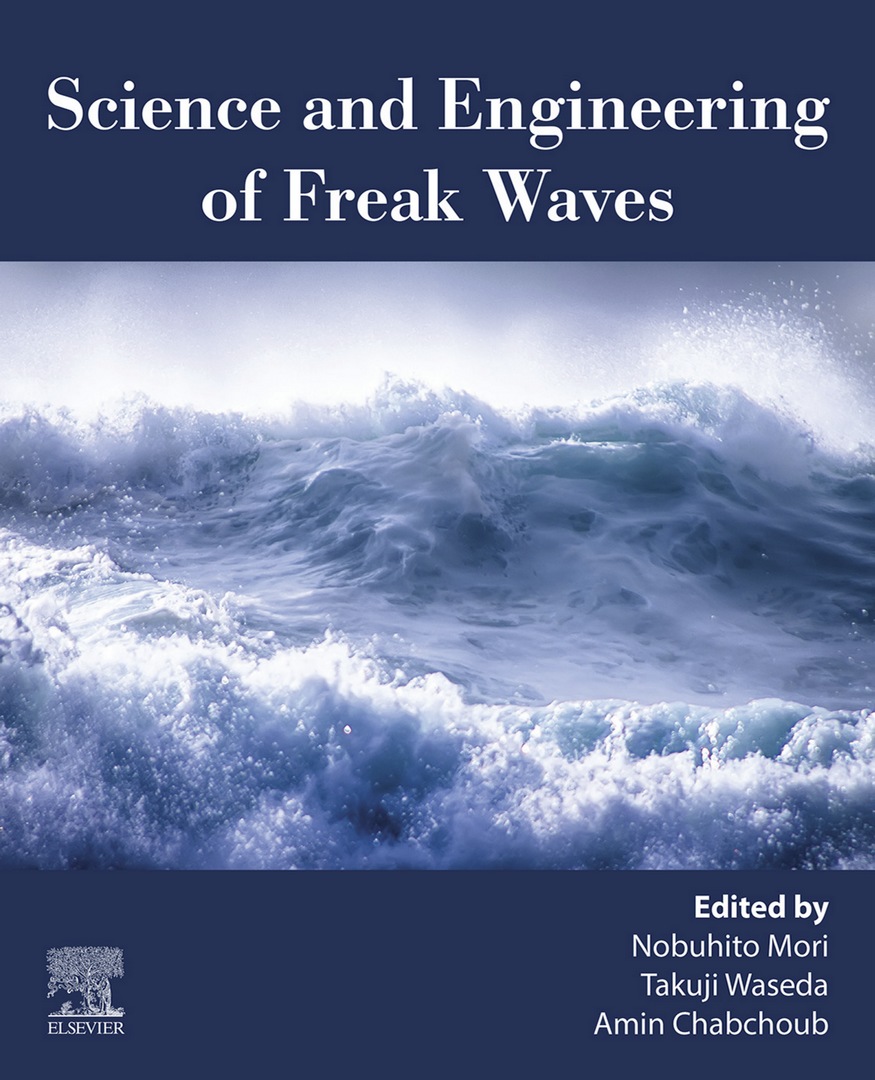The book “Science and Engineering of Freak Waves” (2023, Elsevier) provides a comprehensive overview of the current state of knowledge on extreme ocean waves and freak waves (also known as rogue waves), i.e., those waves of considerable, sometimes unexpected height that can be generated during marine storms, posing a real risk to offshore and coastal structures, and to navigation. In this volume, the authors have brought together the history of extreme wave observations, the fundamental theory, methods for their observation and prediction, and the implications these waves have on offshore and coastal structures, providing examples of the application of extreme wave research results to engineering projects.
With a holistic and interdisciplinary point of view, the book will appeal to physical oceanographers who wish to better understand the physics, observational techniques, and modeling of these waves, and to engineers who want more information about their prediction and the implications these waves have for offshore structures and navigation.
The volume is edited and written by an international team of researchers with decades of knowledge of extreme ocean waves. In particular, the chapters “Measurements 2: space-time measurements of freak waves” and “Prediction 2: long-term prediction of extreme waves” were written with contributions from CNR-ISMAR researchers Alvise Benetazzo, Francesco Barbariol e Filippo Bergamasco, who have been working for a long time in the field of observation and modeling of extreme ocean waves.
